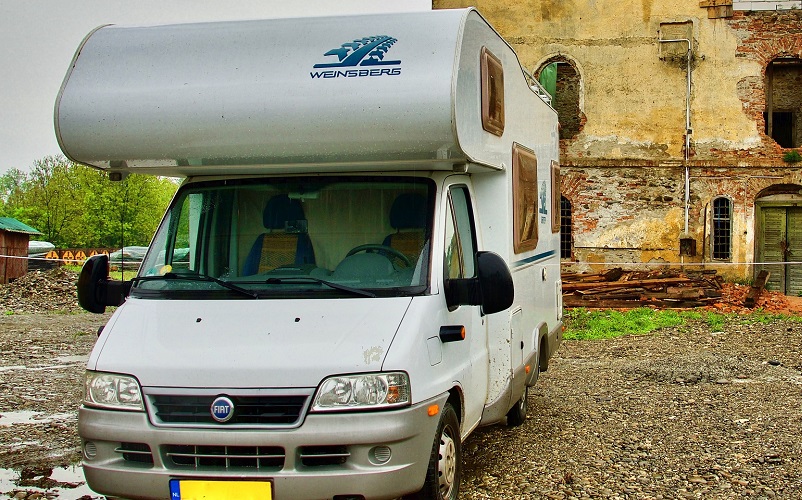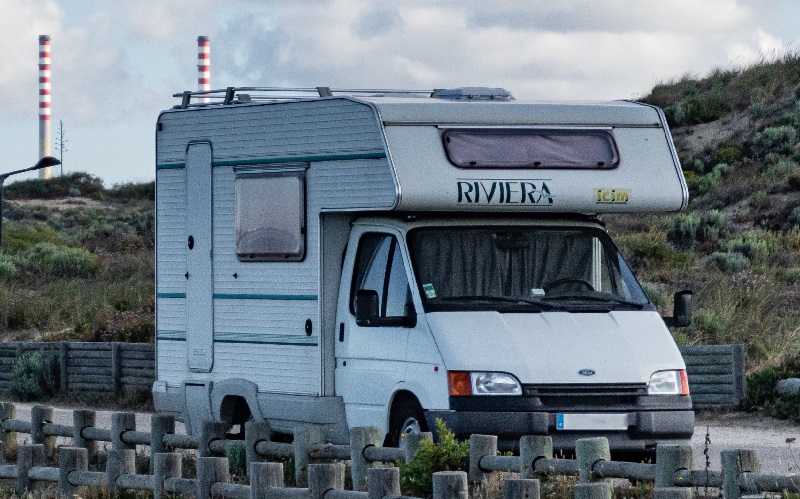RV detailing along with a regular repair and maintenance schedule will keep your vehicle road safe and in good condition. The age, make and model of your RV largely determine what detailing products and procedures are best suited to the specifics of your vehicle. Older vehicles in particular often need a little extra care and attention. Especially if there are any cracks in the roof that may be letting in water. If this is the case with a fiberglass roof, you will need a fiberglass roof coating or a fiberglass roof sealant, or perhaps a combination of the two. Being aware of the key differences between these products helps to make RV fiberglass roof maintenance more manageable and effective.
Key Differences Between Fiberglass Roof Coating and Fiberglass Roof Sealant
These two products serve different purposes when it comes to protecting and maintaining the appearance of your vehicle. Fiberglass roof sealant is a quick-fix solution. It is often referred to as self-leveling sealant because it is used specifically for horizontal surfaces, such as an RV roof. It retains a degree of flexibility that is compatible with the movement of the roof when you’re on the road. Applying a fiberglass roof coating is a much more time-consuming job. It requires preparatory work, several coats and also drying time to achieve the desired finish. Take a look at the differences in more detail:
Fiberglass Roof Coating Vs Fiberglass Roof Sealant
You can tell the difference between these products simply by looking at them. Roof coating comes in a tin whereas sealant is commonly sold in a tube with a nozzle. They are both liquids but have a different consistency. Fiberglass roof sealant is a strong adhesive with a thicker consistency, which helps it bond firmly to an acrylic roof to create a lock-tight seal.
In contrast, a fiberglass roof coating is made from acrylic fiberglass resins and pretty much looks like regular paint. It is much thinner than the sealant and has a runny consistency, which makes it easier to spread it thinly and evenly over the entire roof of your RV.
Using Coating and Sealant For Different Purposes
Both products are used to seal the roof and keep it watertight. However, the main difference is how and where you apply it. Sealant is used to create a watertight seal along the roof’s edges and around air vents, vent pipes and screw heads. A fiberglass roof coating is used to cover the entire roof. The purpose of the coating is to fill in any visible cracks and to create a smooth, watertight surface to protect against leaks. It will also help reflect the sunlight to keep the interior cool. An application of a fiberglass coating helps to maintain a good-as-new appearance. The methods of application are different, too, see below.
Different Application Techniques
Another key difference between fiberglass roof coating and fiberglass roof sealant is the application process. You apply fiberglass roof coating with a paintbrush or a long-handled paint roller to ensure even coverage across the whole roof. However, fiberglass roof sealant is usually applied directly from the tube onto the roof. For example, direct the nozzle at the screw heads around a vent and apply sealant. Then run a bead around the vent perimeter to make sure it is watertight and secure.
Prep Work Time Difference
You will also need to factor in the time difference when it comes to preparation. There is less prep work involved when using a sealant. For example, if you are replacing or repairing vents, you simply need to remove all the old roof sealant first before applying the new sealant.
Preparing the roof for a new coating is more time-consuming. Cleaning an RV roof is an important first step in the process. This should remove most of the stains, debris and marks. Having thoroughly cleaned the roof, it is also advisable to sand the roof down. This will get rid of any scratches or loose fiberglass flakes and will provide a textured surface to aid the adhesion process. Then you will need to re-wash the roof and let it dry. Don’t forget to use protective sheeting to protect your RV bodywork from any runoff and apply tape around edges and vents. For more prep tips, see how to wash an RV.
When to Use Fiberglass Roof Sealant
Sometimes you need more than an RV wash and wax. Therefore, if you need to repair, replace or upgrade a vent on your RV roof or you want to fix a leak fast, reach for the fiberglass roof sealant. For example, Dicor Self-Leveling Lap Sealant is ideal for quick jobs or sealing an RV roof vent.
However, if you are planning to refresh and repair the entire roof or de-winterize RV, it makes sense to use a combination of both fiberglass roof sealant and a fiberglass roof coating product. Ideally, sealant touch-ups should be done in advance of a roof coating job. This will give the sealant enough time to set and dry before washing the roof prior to the coating application.
Difference in Price
RV detailing supplies vary in price. This includes sealants and coatings. A fiberglass roof sealant is great when you need to fix a roof on a budget. You simply apply the sealant directly to the cracks or gaps around vents, air conditioners or any places that are letting water into your vehicle. For example, you can spend around $15 for a 10.3 oz tube of sealant.
In contrast, it costs around $70-$90 for a gallon tin of fiberglass roof coating to fill in the cracks in your roof. Bear in mind that two coats are required for best results. You will need to allow time for one coating to dry before applying another. As a general guide, one gallon of RV fiberglass roof maintenance will cover 350 sq ft per coat.
Alternatively, if you prefer to hire someone for the job, bear in mind that RV detailing prices vary too. Most RV detailing packages will include a roof wash. However, expect to pay extra to have restorative work and fresh sealant applied. Shop around and be sure to ask your detailer what is and what isn’t included in the price.
Conclusion
Familiarizing yourself with the differences between fiberglass roof coating and fiberglass roof sealant is key to achieving the best results when carrying out RV repair and maintenance jobs. Sealant is great for quick-fix results when your roof starts to leak. However, the recommendation is to use both products together when it is time to waterproof and seal your roof before your next adventure. Take care when working on the roof of your RV, especially if you have washed it prior to applying your roof sealant or coating. It can become slippery underfoot.
No matter what the task, keeping your RV in prime condition does take some time and effort. You also need to invest in the correct products, tools and equipment to achieve the best results. Alternatively, you can book your appointment with DetailXPerts for a professional RV detailing service. Our team of detailing professionals use advanced steam technology and eco-friendly products to achieve a superior clean.
Don’t forget to check out DetailXPerts’ Pinterest ideas on cleaning and detailing your auto, RV, truck, boat, or any other vehicle.





